
-
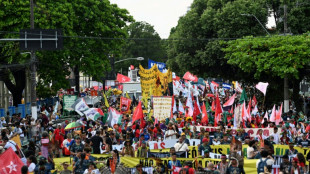 Climate protesters rally in Brazil at COP30 halfway mark
Climate protesters rally in Brazil at COP30 halfway mark
-
Spike Lee gifts pope Knicks jersey as pontiff meets film stars

-
 BBC caught in crossfire of polarised political and media landscape
BBC caught in crossfire of polarised political and media landscape
-
'Happy' Shiffrin dominates in Levi slalom for 102nd World Cup win
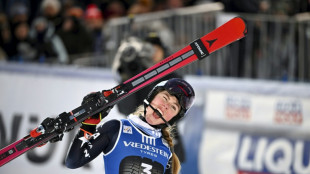
-
 Palestinian national team on 'mission' for peace in Spain visit
Palestinian national team on 'mission' for peace in Spain visit
-
Brazilian 'Superman' cheers child cancer patients in Ghana

-
 India close in on win over South Africa after Jadeja heroics
India close in on win over South Africa after Jadeja heroics
-
Huge explosions rock industrial area near Argentina's capital

-
 Bezzecchi takes pole for Valencia sprint and MotoGP
Bezzecchi takes pole for Valencia sprint and MotoGP
-
Dominant Shiffrin leads after first slalom run in Levi
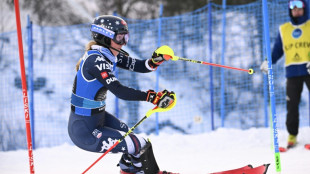
-
 Nine killed in accidental explosion at Indian Kashmir police station
Nine killed in accidental explosion at Indian Kashmir police station
-
Climate protesters to rally at COP30's halfway mark

-
 Fighting South Africa lose Rickelton after India 189 all out
Fighting South Africa lose Rickelton after India 189 all out
-
Harmer leads South Africa fightback as India 189 all out

-
 Prison looms for Brazil's Bolsonaro after court rejects his appeal
Prison looms for Brazil's Bolsonaro after court rejects his appeal
-
EU bows to pressure on loosening AI, privacy rules

-
 India close in on lead despite South African strikes
India close in on lead despite South African strikes
-
Curry's 49 points propel Warriors in 109-108 win over Spurs

-
 NZ boxer Parker denies taking banned substance after failed test
NZ boxer Parker denies taking banned substance after failed test
-
Australia setback as Hazlewood ruled out of 1st Ashes Test

-
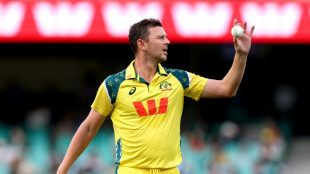 Australia pace spearhead Josh Hazlewood ruled out of 1st Ashes Test
Australia pace spearhead Josh Hazlewood ruled out of 1st Ashes Test
-
UN Security Council to vote Monday on Trump Gaza plan

-
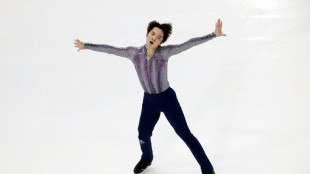 Japan's Tomono leads after men's short program at Skate America
Japan's Tomono leads after men's short program at Skate America
-
China tells citizens to avoid Japan travel as Taiwan row grows

-
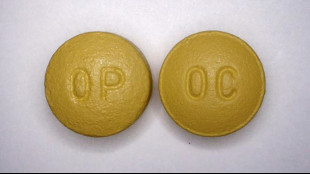 Purdue Pharma to be dissolved as US judge says to approve bankruptcy
Purdue Pharma to be dissolved as US judge says to approve bankruptcy
-
Iran's first woman orchestra conductor inspires

-
 Wood gets all-clear in boost for England
Wood gets all-clear in boost for England
-
Golf's world No. 8 Thomas has back surgery
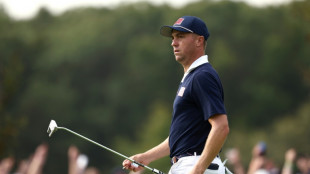
-
 Rebooted Harlem museum celebrates rise of Black art
Rebooted Harlem museum celebrates rise of Black art
-
'Desperation in the air': immigrant comics skewer Trump crackdown

-
 UN regulator says shipping still wants to decarbonize -- despite US threats
UN regulator says shipping still wants to decarbonize -- despite US threats
-
Grant, Kim share halfway lead in LPGA Annika tournament
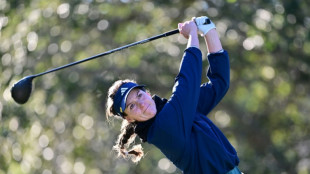
-
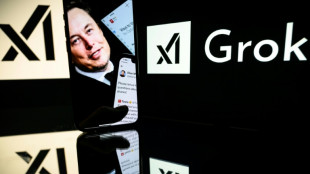 Musk's Grokipedia leans on 'questionable' sources, study says
Musk's Grokipedia leans on 'questionable' sources, study says
-
Trump signs order to lower tariffs on beef, coffee, other goods

-
 Croatia qualify for 2026 World Cup, Netherlands close, Germany in limbo
Croatia qualify for 2026 World Cup, Netherlands close, Germany in limbo
-
'Last Chance U' coach dies after shooting: US police

-
 Sinner completes perfect ATP Finals group stage, Auger-Aliassime reaches last four
Sinner completes perfect ATP Finals group stage, Auger-Aliassime reaches last four
-
Woltemade sends Germany past Luxembourg in World Cup qualifier

-
 Croatia qualify for 2026 World Cup with 3-1 win over Faroes
Croatia qualify for 2026 World Cup with 3-1 win over Faroes
-
Kai Trump makes strides but still misses cut in LPGA debut

-
 Return to bad days of hyperinflation looms in Venezuela
Return to bad days of hyperinflation looms in Venezuela
-
US airspace recovers as budget shutdown ends

-
 Russia strike on Kyiv apartment block kills six, Ukraine says
Russia strike on Kyiv apartment block kills six, Ukraine says
-
Arrest made in shooting of 'Last Chance U' coach: US police

-
 At COP30, senator warns US 'deliberately losing' clean tech race with China
At COP30, senator warns US 'deliberately losing' clean tech race with China
-
US, Switzerland say deal reached on trade and tariffs

-
 Fossil fuel lobbyists out in force at Amazon climate talks: NGOs
Fossil fuel lobbyists out in force at Amazon climate talks: NGOs
-
Returning Alldritt blames himself for France axing

-
 Stocks struggle on US rates, tech rally fears
Stocks struggle on US rates, tech rally fears
-
A rare oil CEO shows up at COP30, spars with activists


From Antarctica to Brussels, hunting climate clues in old ice
In a small, refrigerated room at a Brussels university, parka-wearing scientists chop up Antarctic ice cores tens of thousands of years old in search of clues to our planet's changing climate.
Trapped inside the cylindrical icicles are tiny air bubbles that can provide a snapshot of what the earth's atmosphere looked like back then.
"We want to know a lot about the climates of the past because we can use it as an analogy for what can happen in the future," said Harry Zekollari, a glaciologist at Vrije Universiteit Brussel (VUB).
Zekollari was part of a team of four that headed to the white continent in November on a mission to find some of the world's oldest ice -- without breaking the bank.
Ice dating back millions of years can be found deep inside Antarctica, close to the South Pole, buried under kilometres of fresher ice and snow.
But that's hard to reach and expeditions to drill it out are expensive.
A recent EU-funded mission that brought back some 1.2-million-year-old samples came with a total price tag of around 11 million euros (around $12.8 million).
To cut costs, the team from VUB and the nearby Universite Libre de Bruxelles (ULB) used satellite data and other clues to find areas where ancient ice might be more accessible.
- Blue ice -
Just like the water it is made of, ice flows towards the coast -- albeit slowly, explained Maaike Izeboud, a remote sensing specialist at VUB.
And when the flow hits an obstacle, say a ridge or mountain, bottom layers can be pushed up closer to the surface.
In a few rare spots, weather conditions like heavy winds prevent the formation of snow cover -- leaving thick layers of ice exposed.
Named after their colouration, which contrasts with the whiteness of the rest of the continent, these account for only about one percent of Antarctica territory.
"Blue ice areas are very special," said Izeboud.
Her team zeroed in on a blue ice stretch lying about 2,300 meters (7,500 feet) above sea level, around 60 kilometres (37 miles) from Belgium's Princess Elisabeth Antarctica Research Station.
Some old meteorites had been previously found there -- a hint that the surrounding ice is also old, the researchers explained.
A container camp was set up and after a few weeks of measurements, drilling, and frozen meals, in January the team came back with 15 ice cores totalling about 60 meters in length.
These were then shipped from South Africa to Belgium, where they arrived in late June.
Inside a stocky cement ULB building in the Belgian capital, they are now being cut into smaller pieces to then be shipped to specialised labs in France and China for dating.
Zekollari said the team hopes some of the samples, which were taken at shallow depths of about 10 meters, will be confirmed to be about 100,000 years old.
- Climate 'treasure hunt' -
This would allow them to go back and dig a few hundred meters deeper in the same spot for the big prize.
"It's like a treasure hunt," Zekollari, 36, said, comparing their work to drawing a map for "Indiana Jones".
"We're trying to cross the good spot on the map... and in one and a half years, we'll go back and we'll drill there," he said.
"We're dreaming a bit, but we hope to get maybe three, four, five-million-year-old ice."
Such ice could provide crucial input to climatologists studying the effects of global warming.
Climate projections and models are calibrated using existing data on past temperatures and greenhouse gases in the atmosphere -- but the puzzle has some missing pieces.
By the end of the century temperatures could reach levels similar to those the planet last experienced between 2.6 and 3.3 million years ago, said Etienne Legrain, 29, a paleo-climatologist at ULB.
But currently there is little data on what CO2 levels were back then -- a key metric to understand how much further warming we could expect.
"We don't know the link between CO2 concentration and temperature in a climate warmer than that of today," Legrain said.
His team hopes to find it trapped inside some very old ice. "The air bubbles are the atmosphere of the past," he said. "It's really like magic when you feel it."
U.AlSharif--SF-PST
